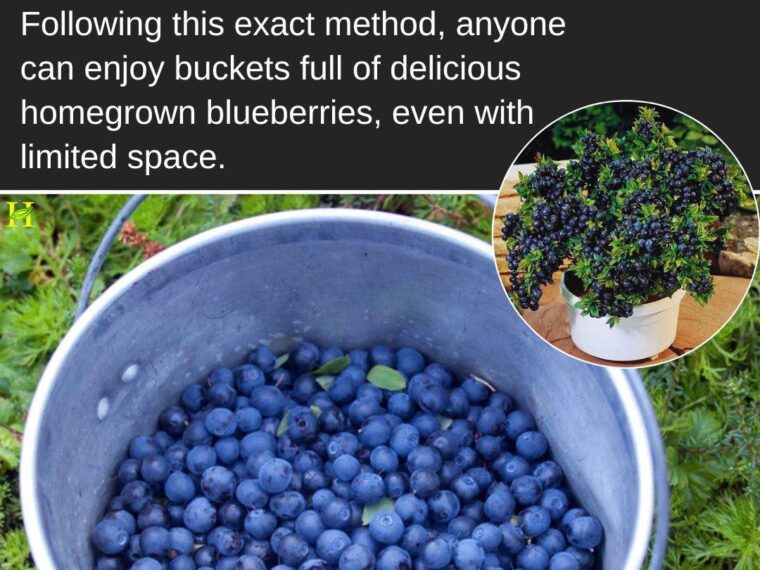Few things compare to the burst of flavor from a sun-ripened blueberry plucked straight from the bush.
Whether tossed into your morning oatmeal, baked into muffins, or eaten by the handful, blueberries are a sweet, nutritious treat. Even better? You can grow a continuous, homegrown supply—right in your backyard.
With just a bit of planning and care, blueberry bushes can produce generous harvests for decades. A mature bush yields anywhere from 5 to 15 pounds of fruit each year—enough to keep your fridge (and freezer) stocked.
Here’s how to grow your own never-ending crop of blueberries at home, from selecting the right varieties to harvesting year after year.
Why Grow Your Own Blueberries?
Growing blueberries isn’t just delicious—it’s practical too:
- Save money: A few bushes can yield dozens of pints each season.
- Nutrient-rich: Packed with antioxidants, vitamin C, and fiber.
- Low-maintenance: Easy to care for once established.
- Pesticide-free: You control what goes into your food.
- Attractive landscaping: Beautiful blooms in spring, berries in summer, and vibrant foliage in fall.
Step 1: Choose the Right Blueberry Varieties
There are three main types of blueberries, and choosing the right one depends on your climate and space.
🔹 Highbush (Vaccinium corymbosum)
- Common in home gardens
- Grows 4–6 feet tall
- Ideal for USDA Zones 4–7
- Produces large, sweet berries
🔹 Rabbiteye (Vaccinium ashei)
- Tolerant of heat and drought
- Grows 6–10 feet tall
- Best for Zones 7–10
- Requires two or more varieties for pollination
🔹 Lowbush (Vaccinium angustifolium)
- Compact (1–2 feet tall)
- Hardy in colder regions (Zones 3–6)
- Smaller berries with intense flavor
Pro Tip: Plant at least two varieties that bloom at the same time to encourage cross-pollination and bigger harvests.
Step 2: Pick the Right Planting Spot
Blueberries love sunshine and acidic soil.
Ideal growing conditions:
- 🌞 Full sun: At least 6–8 hours per day
- 🌱 Acidic soil: pH between 4.5 and 5.5 (test your soil!)
- 💧 Good drainage: Avoid soggy areas
- 🌬️ Sheltered from strong winds
If your soil isn’t acidic enough, mix in peat moss, pine needles, elemental sulfur, or oak leaf compost.
Step 3: Planting Your Blueberry Bushes
The best time to plant is early spring or late fall.
Planting Steps:
- Dig a hole twice as wide and just as deep as the root ball.
- Mix in acidic organic matter like peat moss or compost.
- Set the bush in the hole with the crown at soil level.
- Backfill, water well, and mulch with pine bark or wood chips.
Spacing Guidelines:
- Highbush: 4–6 feet apart
- Rabbiteye: 6–8 feet apart
- Lowbush: 2–3 feet apart
Step 4: Watering & Fertilizing
💧 Watering
Blueberries have shallow roots, so moisture is key—especially in the first few years.
- 1–2 inches of water weekly
- Use a soaker hose or drip irrigation for deep, even watering
🌿 Fertilizing
- Use a fertilizer for acid-loving plants (like azaleas or rhododendrons)
- Apply in early spring and again in late spring
- Avoid fertilizing after mid-July to prevent frost-sensitive late growth
Step 5: Prune for Health and High Yields
Pruning may seem harsh, but it’s vital for fruit quality and plant health.
✂️ When to Prune
Next page





